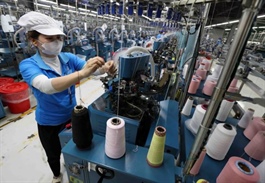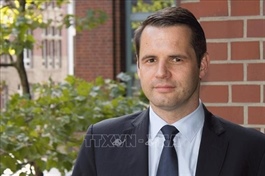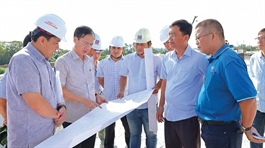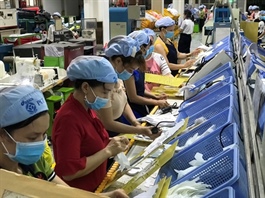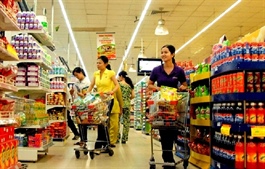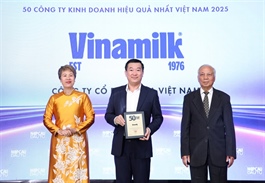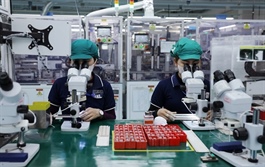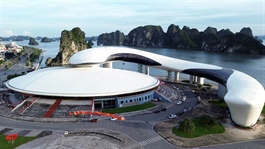Mộc Bài Border Gate Economic Zone eyes breakthrough growth
Mộc Bài Border Gate Economic Zone eyes breakthrough growth
A new master plan envisions transforming Mộc Bài Border Gate into a modern industrial-urban hub and a vital trade gateway linking Việt Nam with Cambodia and, further beyond, other ASEAN member countries.
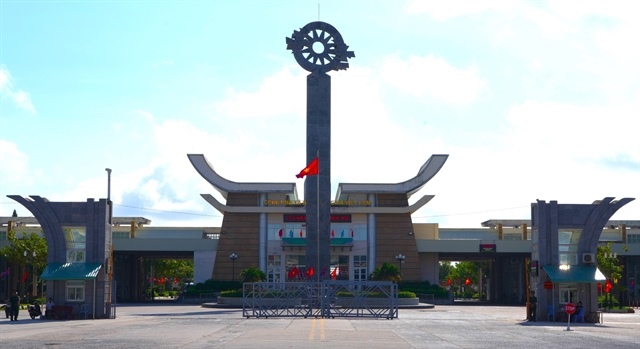
The Mộc Bài International Border Gate in Tây Ninh Province. VNA/VNS Photo |
The newly approved master plan for the Mộc Bài Border Gate Economic Zone in Tây Ninh Province is potentially a breakthrough for the frontier area.
It envisions transforming Mộc Bài Border Gate into a modern industrial-urban hub and a vital trade gateway linking Việt Nam with Cambodia and, further beyond, other ASEAN member countries.
On June 11 Prime Minister Phạm Minh Chính approved the general construction plan spanning 21,284 hectares across Bến Cầu, Phước Chỉ and Long Thuận communes.
Nguyễn Hồng Thanh, vice chairman of Tây Ninh Province, described the plan as a historic milestone that would turn Mộc Bài into not only a new growth driver for the province but also the country.
Deputy Minister of Construction Nguyễn Tường Văn emphasised that the zone would be developed as a smart industrial-urban area, a logistics and financial centre and a hub for international trade.
The ambition is built on Việt Nam’s growing ties with Cambodia.
Deputy Minister of Industry and Trade Phan Thị Thắng highlighted Cambodia’s role as a transport and trans-shipment hub in the Mekong sub-region.
Bilateral trade has shown impressive growth, tripling from 2014 to US$10.1 billion in 2024.
The 2024 Border Trade Agreement and a bilateral promotion plan for 2025-2026 are expected to further ease customs clearance and strengthen supply chains.
According to Trịnh Thị Xuân Diệu, CEO of Logsun Global Logistics, Cambodia is a close market with reasonable transport costs, while Việt Nam’s southern ports serve as gateways for Cambodian goods to global markets.
But major challenges remain nevertheless.
Poor transport links between Mộc Bài, HCM City and the Southeastern key economic region have slowed development.
Businesses also face limited parking, inadequate cold storage and congestion at peak times, leading to higher logistics costs.
According to Nguyễn Nam Hưng, director of Tây Ninh’s Department of Construction, the new plan places emphasis on high-tech industries, sustainable growth, and integration into the Trans-Asian Economic Corridor, connecting Mộc Bài, HCM City and the Cái Mép–Thị Vải Port Cluster.
To realise its vision, Tây Ninh has detailed five functional zones: border-gate services, industrial and logistics areas, urban complexes, eco-tourism along the Vàm Cỏ Đông River, and rural-agricultural zones.
It sets out specific steps, including four border-gate zones, large-scale logistics centres, eight industrial parks, three combined industrial-urban-service complexes, and eco-tourism sites.
Investment in infrastructure in the first phase is estimated at over VNĐ50 trillion ($2 billion).
Thanh said the province would propose pilot policies for land, tax and customs to the Government to attract investors.
Enterprises have already begun investing in cold supply chains and cross-border distribution networks to expand trade beyond the checkpoint.
For Tây Ninh, the plan serves as a legal framework and a clear roadmap for management and investment attraction.
The Ministry of Construction has pledged support to ensure the ambitious goals are met.
The master plan for the Mộc Bài Border Gate Economic Zone is therefore more than a development scheme; it is a firm commitment to turning the borderland into a prosperous frontier, driving growth for both Tây Ninh and Việt Nam.
- 09:12 07/10/2025




